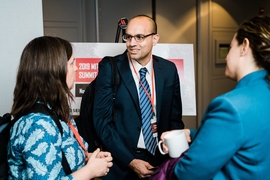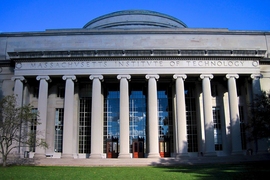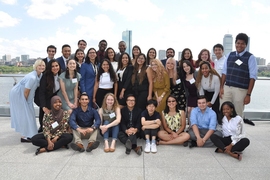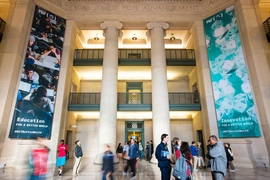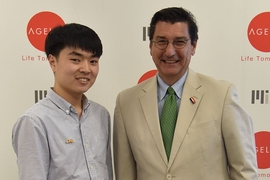Senior Emily Soice, a talented violinist, has thrived at MIT, pursuing a dual major in civil and environmental engineering and music. “MIT has an amazing music program,” she says. “You really get a rigorous conservatory experience here.” A member of two performance ensembles, she enjoys connecting with others on campus through their shared love of music.
In her engineering studies, Soice is focused on the issue of sustainable agriculture. “The wealth of research opportunities at MIT is astounding,” she says. “I’m able to contribute to that research during my undergraduate years.”
A scholarship to MIT made it possible for Soice to pursue her passions and seek out solutions to pressing global challenges. “When I got into MIT,” she recalls, “my family had been unemployed for more than a year. It wouldn’t have been possible for me to go to MIT if I didn’t have a scholarship.”
As one of only five universities in the United States with need-blind admissions for all students, both U.S. and international, MIT is committed to meeting the full financial need of every accepted student without requiring them to take out loans, according to Stuart Schmill ’86, dean of admissions and student financial services. “Scholarships allow us to attract the best students from around the world, regardless of their financial or geographic background,” he says.
This past fiscal year, nearly 5,000 alumni and friends around the country and the world contributed $38 million toward undergraduate financial aid — a record amount for the Institute. Gifts for scholarships ensure that MIT can continue to uphold its commitment to need-blind admissions. A priority of the MIT Campaign for a Better World — launched in 2016 to drive the Institute’s work on some of humanity’s biggest challenges — undergraduate student aid continues to have significant needs.
Fundraising for scholarships helps MIT continue to bring the most-promising students to campus regardless of income level. In academic year 2018-19, MIT provided need-based financial aid awards to 59 percent of undergraduate students, with a median scholarship of approximately $53,000, the equivalent of MIT’s 2019-20 undergraduate tuition.
Both Soice and Schmill point out that financial aid does more than attract students to MIT. “It also helps them succeed once they’re here,” explains Schmill. “If students are stressed about finances, it’s going to affect their educational choices and their ability to participate fully in the life of the Institute.”
“There is so much open to you once you get into MIT,” says Soice. “It’s an amazing place to explore, and having a scholarship has allowed me to explore so much.” After graduation, she plans to attend graduate school, then work for a nonprofit focused on solving problems in agriculture or food systems.
Scholarships, according to Schmill, help create “a robustly talented and diverse class in order to enhance the living and learning environment, and therefore the educational outcomes, for all our students. Every scholarship introduces a new mind into the MIT community, and simultaneously enriches the life of the recipient and the campus.”
Emily Soice agrees. “Without a scholarship,” she says, “I wouldn’t be here.”



